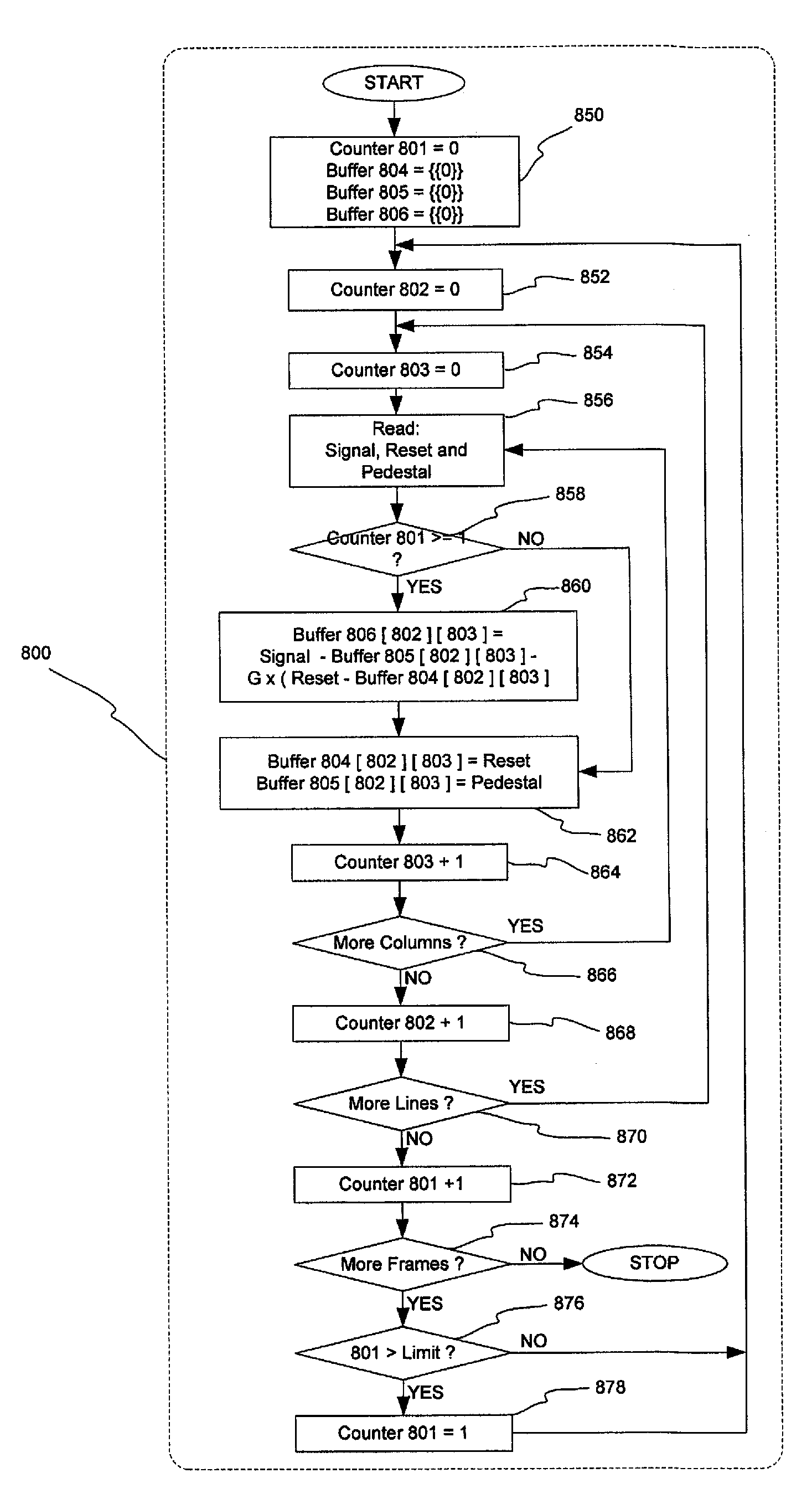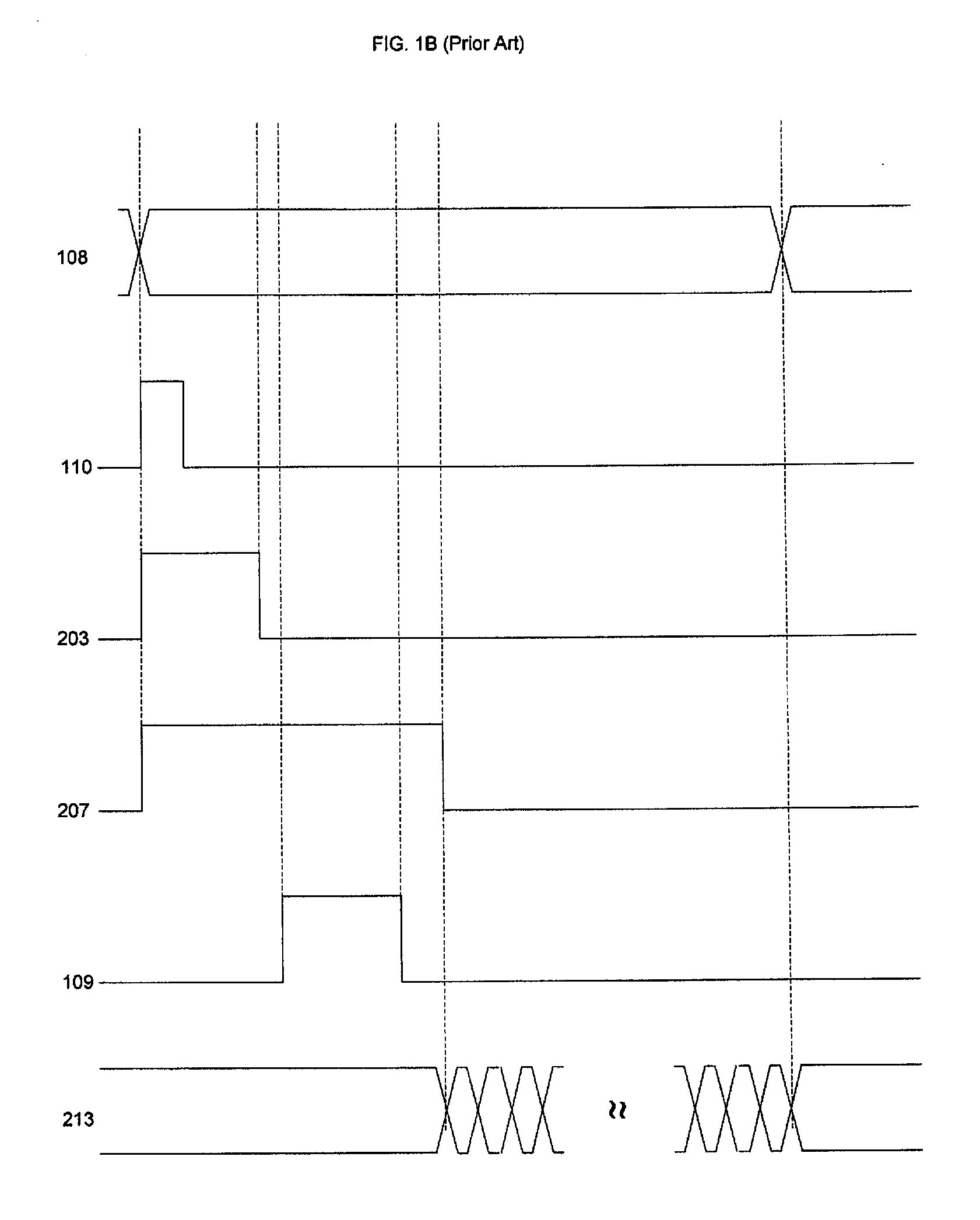Ultra low noise CMOS imager
- Summary
- Abstract
- Description
- Claims
- Application Information
AI Technical Summary
Benefits of technology
Problems solved by technology
Method used
Image
Examples
Embodiment Construction
[0025]FIG. 1A depicts a prior art Active Pixel Sensor (APS) of four transistors (4T) and Column Buffer design that provides on-chip CDS (correlated double sampling). The active pixel sensor cell is typically (but not always) realized with N-type transistors. A CMOS imager comprises an array of pixels, two of which are shown here. Both pixels 100 are identical. Pixel 100 includes a fully depleted pinned photodiode 101 overlying a doped region of a substrate for accumulating photo-generated charge during an integration period. Photodiode 101 is emptied when the charge accumulated on it is transferred to an amplifier 104 via a transfer transistor 103. Amplifier 104 is reset prior to charge transfer via a reset switch or transistor 102 which is controlled by a reset clock 110 provided to its gate. Transfer transistor 103 provides means of transferring the charge from the collection region and providing a corresponding voltage level on the gate of amplifier transistor 104 (e.g., a Source...
PUM
 Login to View More
Login to View More Abstract
Description
Claims
Application Information
 Login to View More
Login to View More - R&D
- Intellectual Property
- Life Sciences
- Materials
- Tech Scout
- Unparalleled Data Quality
- Higher Quality Content
- 60% Fewer Hallucinations
Browse by: Latest US Patents, China's latest patents, Technical Efficacy Thesaurus, Application Domain, Technology Topic, Popular Technical Reports.
© 2025 PatSnap. All rights reserved.Legal|Privacy policy|Modern Slavery Act Transparency Statement|Sitemap|About US| Contact US: help@patsnap.com



